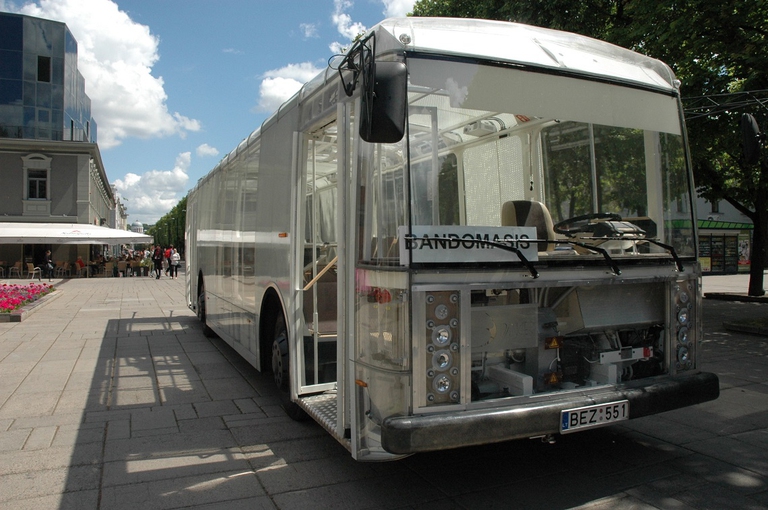
Milan has announced one of Europe’s most ambitious mobility schemes, known as Strade Aperte (open roads). Its goal is to reduce cars in phase 2 of the lockdown by increasing bike lanes and pedestrian areas.
L’autobus, nato in Lituania, oltre a sfruttare l’energia eolica, utilizza materiali tecnologici dando vita a un mezzo concepito per migliorare l’ambiente urbano.
It originally was an old Škoda TR14 trolleybus, but it has now become a Dancer bus, an electric bus with an innovative, technological and eco-friendly design. The vehicle has been realised in Lithuania by Vejo Projektai, with the aim of creating a new generation of public transport for a more efficient and sustainable urban mobility.
The bus is powered by electricity generated from wind energy. The original engine was removed and replaced by four electric engines (one for each wheel), which produce energy thanks to constantly active wind turbines.
[vimeo url=”https://vimeo.com/158144736″]
Its peculiar design, which gives the vehicle a translucent aspect, plays an essential role. The bus has been made lighter by replacing the old metal sheets with vertical translucent panels. The bus is thus naturally illuminated and offers wide city views during day-routes, while, during the night, the interactive panels can be programmed to show images and videos
New panels, made with recycled materials, allowed reducing the vehicle’s weight by 57%, making it easier to be moved with a lower energy use. Moreover, Dancer Bus has no ads on it, thus reducing visual pollution.
Currently, there are two operational Dancer buses in Kaunas, Lithuania’s second largest city, and the aim is converting the entire fleet by 2017. These sustainable, technological and artistic Dancer buses make their silent yet decisive way towards future urban mobility, pushed by a gust of wind.
Siamo anche su WhatsApp. Segui il canale ufficiale LifeGate per restare aggiornata, aggiornato sulle ultime notizie e sulle nostre attività.
![]()
Quest'opera è distribuita con Licenza Creative Commons Attribuzione - Non commerciale - Non opere derivate 4.0 Internazionale.
Milan has announced one of Europe’s most ambitious mobility schemes, known as Strade Aperte (open roads). Its goal is to reduce cars in phase 2 of the lockdown by increasing bike lanes and pedestrian areas.
Formula 1, the world’s most important auto racing championship, has decided to turn the page and aim for carbon neutrality with the support of its teams, drivers and the whole racing circus.
Printed and assembled in a few hours, and then it’s ready to carry up to 12 passengers. The first prototypes of this bus are being tested in the streets of Washington, D.C.
Toyota and LifeGate began telling the story of hybrid mobility back in 2006, now, on the road to the Tokyo 2020 Olympics, they’re still treading the path of sustainable mobility. Here are the main steps of the journey.
Germany’s first solar bicycle lane could be the prototype for the roads of the future. The photovoltaic tiles melt snow and ice, and are capable of absorbing noise.
The Vespa is back in an electric version. Production has just started and the first models can be reserved online starting from October.
The city of Utrecht, in the Netherlands, is home to a bridge for cycling and walking that stretches over roof garden of a Montessori school. This project enhances practicality and will allow families to bring children to school by bike, passing through green areas. Despite their functionality, bridges are often seen as an infrastructure that is
The Lego hair bike helmet is the latest Internet craze. For now it’s just a prototype but production on a large scale will probably start soon.
Just as fires often give way to new growth, after the Dieselgate scandal, which saw Volkswagen cheating on US emission rules, the German car manufacturer radically changed course, beginning to focus on sustainable mobility. The German car company aims to propose thirty zero-emission models and produce at least one million battery electric vehicles by 2025. An ambitious mission








